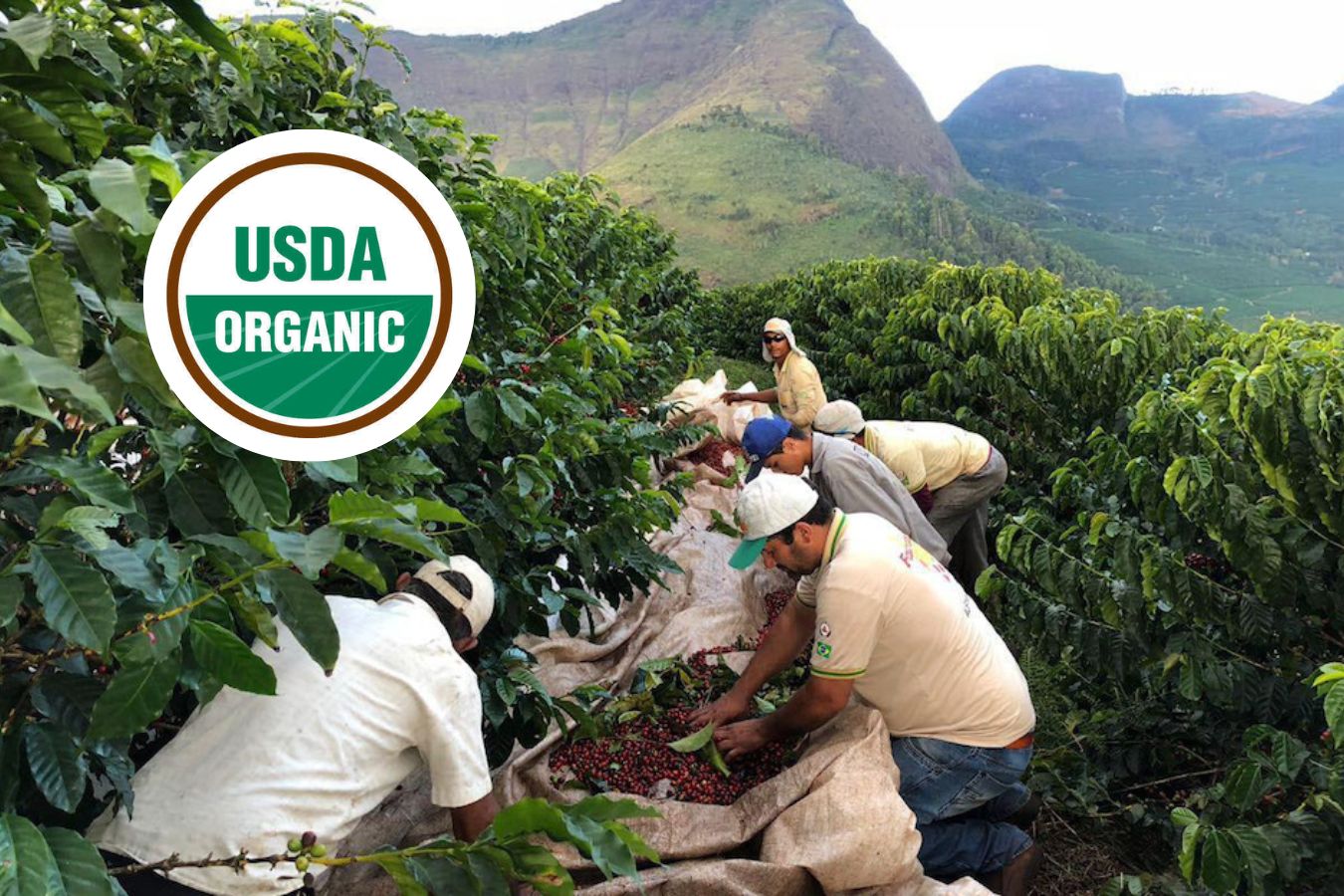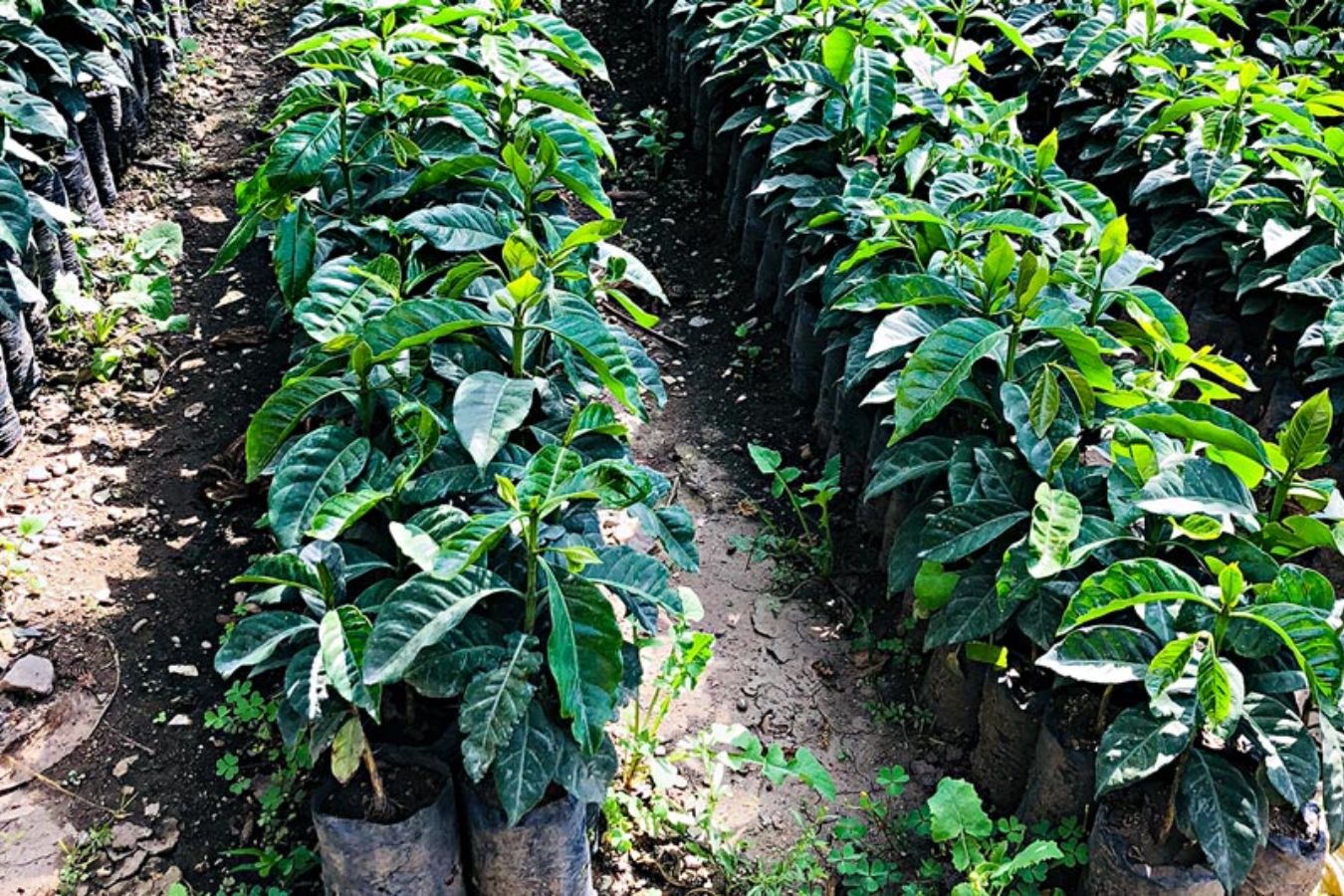
What is the significance of the term “organic coffee”?
The term “organic coffee” comes from the fact that this coffee is grown and developed using organic methods. Farmers must go through a long, careful, and complex procedure to grow coffee using this method.
Organically produced coffee trees are cultivated without the use of pesticides, animal protection medications, or any other synthetic chemical fertilizers. Plants for coffee will be grown in the most natural way possible. During the care and application of microorganisms to fertilize plants, growers can only utilize manual measures.

Organic coffee trees were born when some poor farmers couldn’t afford to buy fertilizers to care for their plants. The organic coffee tree was still immature, neglected, and yielded low-quality beans initially. The care, processing, and production techniques were concentrated and updated as the notion of organic coffee became more widely known and developed. As a result, organic coffee trees produce high-quality coffee beans. Coffee beans grown organically have higher natural antioxidants than coffee beans farmed commercially.
Evaluation criteria for organic roasted coffee beans
Organic coffee has a great flavor, contains no hazardous chemicals, and is entirely safe for consumption. As a result, many industrialized countries prefer organic roasted coffee beans. The following factors must be used to determine whether a coffee meets the organic coffee standards:
- There are no contaminants in this product.
- There are no dangerous substances left behind.
- Colors and fragrances should not be made with chemicals.
- Using foaming agents will result in a bitter, sour taste.
- There are no preservatives in this product.
- Farming, specifically organic farming
Certified organic coffee plants must be produced in an entirely organic setting. Plants are cultivated without chemicals and are grown in their natural state.
To maintain safety and sanitation, the process of cultivating and caring for organic coffee must always be closely monitored. The two most essential components in organic coffee farming are soil and water. As a result, for coffee trees to thrive in the wild, producers must always use clean water and soil sources that are not tainted with pesticides. Furthermore, organic coffee-producing places must be located far away from metropolitan areas, residential areas, and industrial zones to avoid trees being polluted or impacted by industrial dust.
To combat the problem of insects and pathogens in organic coffee, farmers must guarantee that natural adversaries have a stable environment in which to thrive. Plant pests can also be treated using natural herbal components with microbial fertilizers or insecticides.
The roasting of organic coffee
Organic coffee must be roasted in a different roaster from other coffee beans using a different technique. In the production of organic coffee, no chemicals, components, or flavoring agents are used.
No preservatives are employed in the preservation procedure
Organic coffee must be stored in a secure, airtight container to prevent the coffee’s substance, smell, or taste from changing. Producers frequently utilize bags manufactured from environmentally acceptable agricultural materials or packaging with one-way valves to preserve organic coffee.
How to make organic coffee
Clean coffee is another term for organic coffee, which specifies that the processing must be organic. Pure coffee, grown according to organic coffee standards, must be used to prepare.
Vietnam’s organic coffee beans
Because of its economic development path, organic coffee has gained a firm grip in Vietnam in recent years. However, organic coffee yields are still low since it is difficult to cultivate and needs farmers to take special care of it, as they are not permitted to use pesticides. As a result, organic coffee will be significantly more expensive than regular coffee, but it will come with superior quality assurance.

To be certified as organic coffee, it must meet all criteria in all phases, from planting and harvesting to roasting and coffee preparation. This intricate process is causing worry among Vietnamese coffee farmers because full compliance with the standards above necessitates farmers having the financial means to purchase coffee-related equipment. Organic coffee is roasted uniquely.
For the development of coffee in Vietnam and the position of Vietnamese coffee in the global market, organic coffee is becoming an enormous potential and a challenge. Helena believes all baristas who love coffee and create it would enjoy this traditional Vietnamese coffee.
Makes organic coffee
Coffee cherries are used to make espresso beans. These energizing beans do not grow naturally on trees. They grow inside the shells of coffee cherries (which grow on trees) and turn red as they mature. They’re ready for picking and collecting when they’re a brilliant red.
40 beans are used to make a single shot of espresso. Every coffee shot you consumed today contained at least 40 espresso beans.
On the planet, two types of coffee beans are grown: Robusta and Arabica.
Organic coffee imports into the United States and Canada have increased by 29 percent between 2006 and 2007. In a literal sense, this accounts for a decrease from 29,484 tons to 26,741 tons.
Inexpensive coffee maker
Best Overall: Mr. Coffee 12-Cup Drip Coffee Maker
If saving money is a top priority when purchasing a new coffee machine, you should consider this bestseller from Mr. Coffee. Although it is inexpensive, it has excellent reviews and can make a 12-cup pot. It has some basic features that make brewing easy and simple, such as a water window that prevents overfilling and a pause button that allows you to fill up a cup of Joe before the entire pot is finished brewing. Paper filters are required, but the lift and clean basket make cleaning the coffee maker a breeze.
Reviewers agree that this makes a good cup of coffee for a reasonable price. Some have reported that this broke within a couple of years of purchase, but at the price, this was not a major issue for them.
Yes | Capacity: 12 cups (60 ounces) | Dimensions: 8.4 x 11.76 x 12.5 inches | Warranty: 1 year
AEROPRESS Coffee and Espresso Maker
This simple hand-pressed brewer can make either American coffee or espresso and can be used at home or on the go in the included tote. After testing it, our reviewer found the item to be highly portable because it is “made of several parts that can conveniently be broken down to make it more travel-friendly.”
The AeroPress brews 1 to 3 cups of coffee in a minute or less, so you won’t be tapping your toes while waiting for your first cup of coffee in the morning. This works like a French press but uses finely ground coffee to extract more flavor.
It has a super-fine filter that keeps coffee grit out of your drink, eliminating the need to wait for it to settle before sipping. This kit includes 350 paper filters in a filter holder, and the filters can be rinsed and reused multiple times. Additional filters are available in 350-packs and are very inexpensive. They can be purchased online or at any AeroPress retailer.
No electricity | Capacity: 8 ounces | Dimensions: 4.75 x 4.5 x 11.75 inches | Warranty: 1 year
Secura French Press Coffee Maker, 304 Grade Stainless Steel Insulated Coffee Press with 2 Extra Screens
This French press is nearly indestructible, made of 18/10 stainless steel, and will not break with normal kitchen use. It comes with an extra stainless steel screen, which you can stack for finer filtering or keep as a backup in case the first filter is lost. The large handle and lid knob are designed to remain cool even when the coffee is hot, allowing you to pour safely.
This large French press holds 34 ounces of coffee (or tea), allowing you to make a larger batch for guests or a smaller batch for yourself. When you’re done making coffee, all of the parts are dishwasher safe, so cleaning is quick and easy.
Electric: No | Capacity: 12, 17, 34, and 50 ounces | Dimensions: Varies by capacity | Warranty: 2 years
Moka Express: Iconic Stovetop Espresso Maker
Although ic espresso machines can be prohibitively expensive, this classic device known as a Moka pot can make a cup of traditional stovetop espresso. Because it isn’t brewed with the same high pressure as a commercial espresso machine, the coffee made by the Moka Express isn’t technically “real espresso,” but coffee experts widely consider it a type of espresso maker because the resulting brew is more in the spirit of espresso than, say, drip coffee.
According to our product tester, the item is simple to use. Fill the base with cold water, then add the filter and coffee, and screw the top on. Heat the water in the pot until it boils, at which point it will filter through the grounds and fill the pot to the brim. The coffee is ready when all of the water has passed from the bottom to the top. It is recommended to use coffee beans that are finely ground, but not as finely ground as those used in a true espresso machine. This easily disassembles for cleaning, but it must be washed by hand after each use.
Electric: No | Capacity: 1, 2, 3, 4, 6, 9, 12, and 18 espresso-sized cups | Dimensions: 4 x 9 inches (6-cup model) | Warranty: 2 years